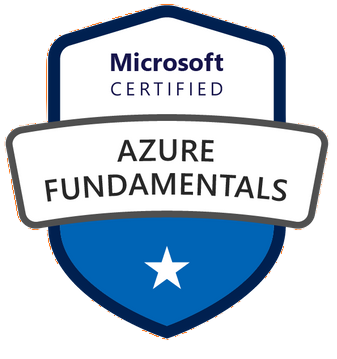-
Episode 1: Cloud Computing, High Availability, Scalability, Elasticity, Agility, Fault Tolerance, and Disaster Recovery
-
Cloud Computing
Service delivery model over the internet (cloud). This includes but is not limited to
-
compute power meaning servers such as windows, Linux, hosting environments, etc.
-
storage like files and/or databases
-
networking in azure but also outside when connecting to your company network.
-
analytics services for visualization and telemetry data
-
Key concepts
-
scalability is the ability to scale, so allocate and deallocate resources at any time.
-
elasticity is the ability to scale dynamically.
-
agility is the ability to react fast (scale quickly)
-
fault tolerance is the ability to maintain system uptime while physical and service component failures happen.
-
disaster recovery is the process and design principle which allows a system to recover from natural or human-induced disasters
-
high availability is the agreed level of operational uptime for the system. It is a simple calculation of system
-
uptime versus the whole lifetime of the system.
-
availability = uptime/(uptime + downtime)
The principle of economies of scale states that as companies grow they become more effective at managing shared operations. Be that HR and hiring, taxes, accounting, internal operations, marketing, big purchases via contracts meaning better discounts, etc., etc.
Because of those, companies can save/earn more which in return allows for reduction in cost of their services to their customers. This is so-called ‘price per unit’.
It’s not possible to go to 0 because, in the end, some underlying infrastructure needs to run to provide the services. But the larger the scale the more benefits can be passed to customers.
In fact, on the current scale, Microsoft can already offer multiple services for free due to how small a fraction of the cost it is for them.
Thus, As Company grows, cost decreases, or we can say that:
Company growth ∝ 1/Cost per user
-
Episode 3: Capital Expenditure (CapEx) vs Operational Expenditure (OpEx)
-
Economies of scale is the ability to do things more efficiently or at a lower cost per unit when operating at a larger scale.
The consumption-based model is a pricing model used in the cloud so that customers are only charged based on their resource usage.
This model is characterized by:
-
No associated upfront cost.
-
No wasted resources as such no charges are incurred for unused resources*. Unused in this case is different per service. For instance, blob storage that stores any data is considered to be used, as it consumes
-
the storage space. Virtual Machines that are running consume CPU, memory, and other resources even if there isn’t any traffic. Hence they are considered to be used and will incur charges.
-
Pay for what you need only.
-
Stop paying when you don’t use resources.
Consumption is the virtual metric used to calculate how much each resource (service) in Azure was used. Each service has many smaller metrics that track its consumption to offer the best possible pricing model. Those metrics are tracked on a very granular level.
-
Service Models responsibilities
As a service means which party will manage the layer and all the layers below.
-
Software layer consists of the application (application code and set) & the application data.
-
Platform layer means all the supporting software and the operating system required to host the application.
-
Infrastructure layer consists of hardware the infrastructure and virtualization required to host the platform.
-
Responsibility Matrix
As such following table represents responsibilities
-
Episode 6: Public, Private, Hybrid cloud and their differences
-
Cloud Deployment Model
Cloud Deployment Model is a separation that describes where are the company resources deployed. Whether this is in a public cloud provider environment or private data center.
The below table presents high-level deployment model separation
-
Public Cloud
-
Private Cloud
-
Hybrid Cloud
-
AZURE – Plans & Subscriptions
You cannot merge two subscriptions into a single subscription. However, you can
-
move some Azure resources from one subscription to another.
-
transfer ownership of a subscription and change the billing type for a subscription.
-
A company can have multiple subscriptions and store resources in the different subscriptions. However, a resource instance can exist in only one subscription.
-
You can use the same account to manage multiple subscriptions. You can create an additional subscription for your account in the Azure portal. You may want an additional subscription to avoid hitting subscription limits, to create separate environments for security, or to isolate data for compliance reasons.
-
You need an Azure Active Directory account to manage a subscription, not a Microsoft account.
An account is created in the Azure Active Directory when you create the subscription. Further accounts can be created in the Azure Active Directory to manage the subscription.
Additional Azure subscriptions:
-
Environments: When managing your resources, you can choose to create subscriptions to set up separate environments for development and testing, security, or to isolate data for compliance reasons. This is particularly useful because resource access control occurs at the subscription level.
Organizational structures: You can create subscriptions to reflect different organizational structures. For example, you could limit a team to lower-cost resources, while allowing the IT
-
Web Tier Plans

EmoticonEmoticon